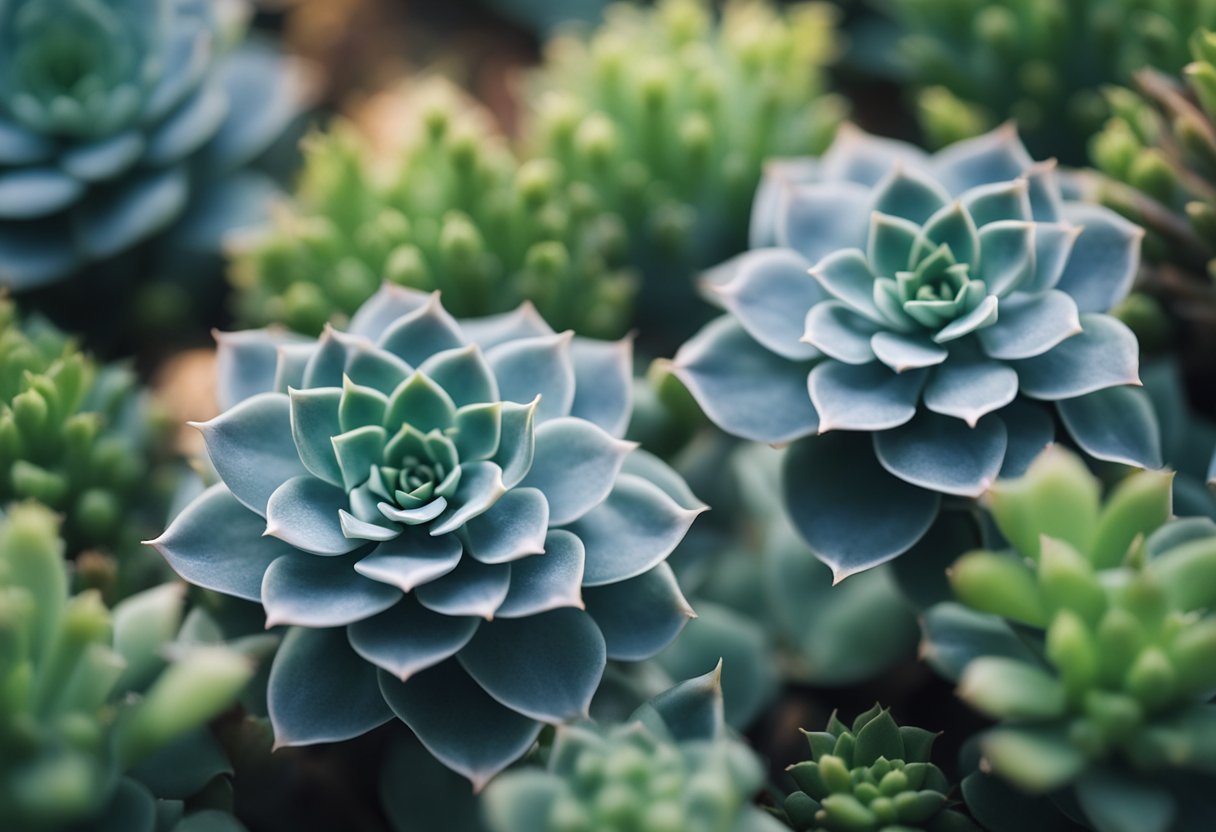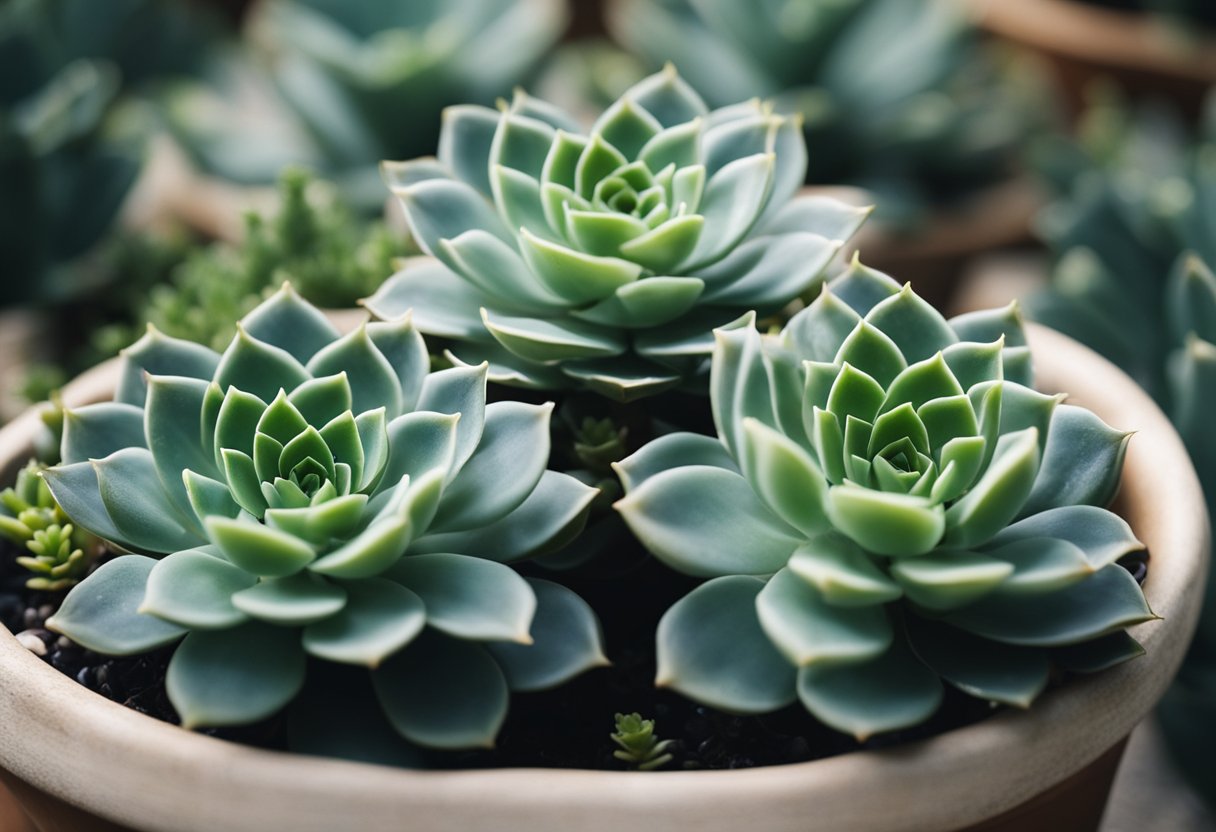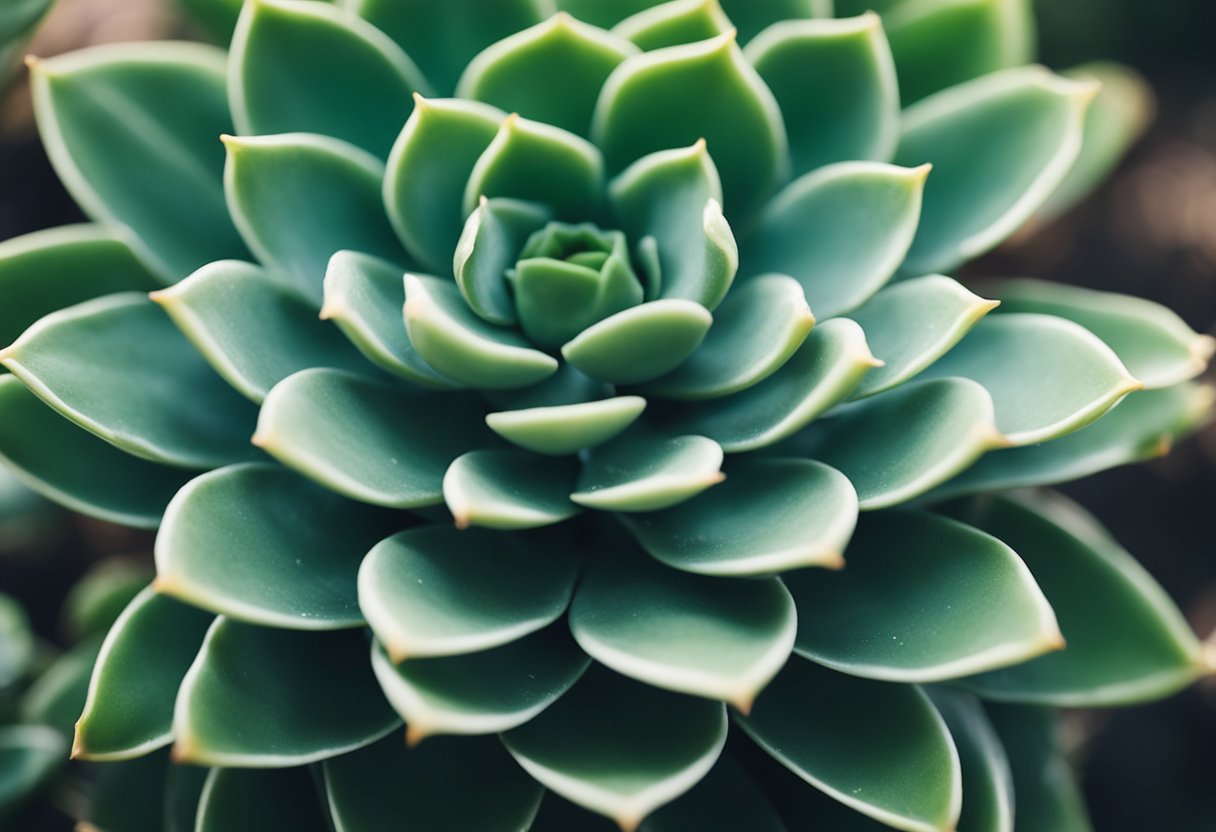Are Hoyas Succulents? A Clear Answer to Your Question
Hoyas are a popular houseplant known for their beautiful foliage and fragrant flowers. Many people wonder if hoyas are succulents due to their thick leaves and ability to store water. The answer is yes, but not all hoyas are equally succulent.
This post may contain affiliate links, which means I’ll receive a commission if you purchase through my link, at no extra cost to you. Please read full disclosure here.

Some hoya varieties have succulent leaves that can store water, making them drought-tolerant and low-maintenance. However, other hoya varieties have thinner leaves that don’t store water as effectively, making them less succulent. It’s important to understand the succulent nature of hoyas to properly care for them and ensure their health.
In this article, we will discuss everything related to hoyas’ remarkable leaves and their succulent nature. We will explore the characteristics, biology, and care needs of hoyas to help readers understand if hoyas are succulents and how to care for them. Whether you’re a new or experienced plant parent, this article will provide valuable information to help you grow and care for your hoya plants.
Understanding Hoyas

Hoyas are a genus of tropical plants that belong to the family Apocynaceae. They are native to Asia, including India, China, Thailand, Malaysia, Vietnam, and Indonesia. Most species in this genus are known for their fragrant and waxy flowers, which are often used in perfumes. The genus was named by botanist Robert Brown in honor of Thomas Hoy, a gardener at Syon House in England.
Hoyas are also commonly known as wax plants or porcelain flowers. They are often grown as houseplants due to their attractive foliage and ease of care. The plants are typically vines that can climb up walls or trellises, or cascade from hanging baskets. Some species can also be grown as shrubs or small trees.
Hoyas have thick, waxy leaves that can store water and help the plant survive in drier conditions. Some species have succulent-like leaves, such as the Sweetheart Hoya plant, which has thick, succulent, heart-shaped leaves. However, not all Hoyas are considered succulents.
Hoyas are often grown for their fragrant flowers, which can range in color from white to pink to red. The flowers are typically star-shaped and have a waxy texture. They are also known as honey plants because they attract bees and other pollinators.
In summary, Hoyas are a genus of tropical plants that are known for their fragrant flowers and attractive foliage. They are often grown as houseplants and can be vines, shrubs, or small trees. While some species have succulent-like leaves, not all Hoyas are considered succulents.
Characteristics of Hoyas

Hoyas are tropical plants that are native to Asia and Australia. They are often referred to as wax plants because of their waxy leaves and beautiful flowers. There are many varieties and cultivars of hoyas, each with its own unique characteristics.
Leaves and Foliage
One of the defining characteristics of hoyas is their foliage. The leaves of hoyas can be fleshy and succulent or thin and papery. Some hoyas have waxy leaves that are thick and glossy, while others have leaves that are covered in fine hairs. The foliage of hoyas can be green, variegated, or even purple.
Flowers and Blooms
Hoyas are known for their beautiful flowers, which come in a variety of colors and shapes. Some hoyas have white flowers, while others have pink, red, or yellow blooms. The flowers of hoyas are often fragrant and can be quite large, with some varieties producing blooms that are several inches across.
Varieties and Cultivars
There are many different varieties and cultivars of hoyas, each with its own unique characteristics. Some of the most popular varieties of hoyas include Hoya kerrii, also known as sweetheart hoya, Hoya carnosa, and Hoya pubicalyx. Each of these varieties has its own unique growth habit, foliage, and flower characteristics.
Sizes and Shapes
Hoyas come in a variety of sizes and shapes, from small, compact plants to large, sprawling vines. Some hoyas have a bushy growth habit, while others are more vine-like and can climb up trellises or walls. The leaves of hoyas can be round, heart-shaped, or even linear, depending on the variety.
In summary, hoyas are unique and beautiful plants that are known for their waxy leaves and fragrant flowers. With a wide variety of sizes, shapes, and colors, there is a hoya plant for every taste and preference.
Growing Hoyas
Hoyas are relatively easy to grow and care for, making them a popular houseplant. In this section, we will discuss the various aspects of growing Hoyas, including indoor vs outdoor growing, climate and temperature requirements, light and watering requirements, soil and fertilizer needs, and propagation methods.
Indoor vs Outdoor Growing
Hoyas can be grown both indoors and outdoors, depending on the environment and growing conditions. Indoor Hoyas can be grown in containers or hanging baskets, while outdoor Hoyas can be grown on trellises or in the ground.
Climate and Temperature Requirements
Hoyas are native to tropical and subtropical regions, so they prefer warm and humid environments. They can tolerate a wide range of temperatures, but they should be protected from frost and extreme heat. In Australia, Hoyas can be grown outdoors year-round in the warmer regions, but they may need to be brought indoors during the colder months in cooler regions.
Light and Watering Requirements
Hoyas prefer bright, indirect sunlight, but they can also tolerate some direct sunlight. They should be watered when the soil is dry to the touch, but they do not like to be overwatered. Additionally, they appreciate some extra micronutrients, and should be fertilized every two weeks with a houseplant fertilizer diluted by half.
Soil and Fertilizer Needs
Hoyas prefer well-draining soil, and they do well in a potting mix that contains orchid bark and perlite. They also appreciate some extra micronutrients, and should be fertilized every two weeks with a houseplant fertilizer diluted by half. If the leaves are pale, increase the fertilizing to full strength.
Propagation Methods
Hoyas can be propagated by stem cuttings or leaf cuttings. Stem cuttings should be taken from the top growth of the plant, while leaf cuttings can be taken from any healthy leaf. The average cutting or leaf will produce a blooming plant in two years or less. The easiest method of propagation is by layering, which matures faster and does not require as much patience.
Caring for Hoyas
Hoyas are known for their low-maintenance care requirements and drought-tolerant nature. However, they still require some attention to thrive. Here are some tips for caring for hoya plants.
Maintenance and Pruning
Hoyas are relatively easy to maintain. They prefer bright, indirect light and should be watered only when the soil is dry to the touch. Overwatering can lead to root rot, so it is important to allow the soil to dry out completely before watering again.
Pruning is also an important aspect of hoya care. It helps to promote healthy growth and prevent the plant from becoming too leggy. Prune back any dead or damaged leaves or stems, and trim back any long, straggly growth.
Pest and Disease Control
Like any plant, hoyas are susceptible to pests and diseases. The most common pests that affect hoyas are aphids and mealybugs. These can be controlled with neem oil or insecticidal soap.
Root rot is a common disease that can affect hoyas if they are overwatered. To prevent root rot, make sure the soil is well-draining and allow it to dry out completely between watering.
Repotting Hoyas
Hoyas prefer to be slightly root-bound, so they do not need to be repotted often. However, if the plant has outgrown its container or the soil is depleted, it may be time to repot.
When repotting, use a well-draining soil mix and a plastic pot. Plastic pots are preferred over clay pots because they retain moisture better, which helps to prevent the soil from drying out too quickly.
Overall, caring for hoyas is relatively easy as long as their basic care requirements are met. With proper maintenance, these plants can thrive and bring beauty to any space.